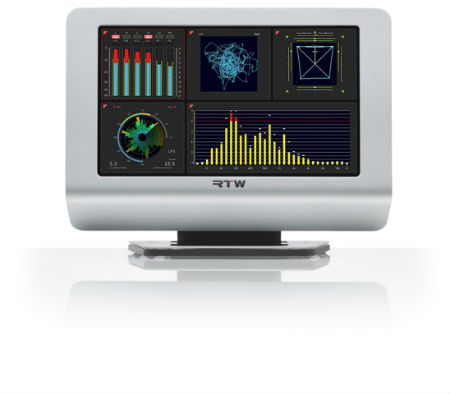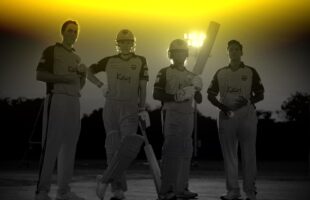
RTW
Cologne, Germany – When Deutsche Welle, Germany’s international broadcaster and a member of the ARD network of German public broadcasters, sought to make its programming compliant with the EBU-R128 loudness mandate, it turned to RTW, the company specialising in visual audio meters and monitoring devices, and the company’s TouchMonitor line of audio meters, to make the transition. With their ability to offer intuitive, precise monitoring, along with their ease of installation, RTW’s TM3, TM7 and TM9 TouchMonitor meters were the perfect fit for the job.
Deutsche Welle first took delivery of the RTW TouchMonitor units last September, employing a combination of 65 TM3, TM7 and TM9 meters with various configurations and feature sets in several recording studios, editing suites and workplaces in its Bonn and Berlin facilities. AVS Medientechnik GmbH, based in Berlin, oversaw the procurement and implementation of the units.
According to Hannes Brandt, technical assistant at Deutsche Welle’s Berlin site, the broadcaster chose RTW on the recommendation of an ARD working group that had tested loudness meters from several manufacturers. He also noted his company had previous experience with the RTW metering systems. “Our production workplaces were already using digital and/or analogue peak meters by RTW, as well as metering instruments from their PortaMonitor series, and the positive experience we had with those products, along with RTW customer support, also contributed to the decision to go with RTW.”
Engineers working on various broadcast shows Deutsche Welle’s Berlin and Bonn sites currently employ the RTW TM3 units in a combined setup with the existing RTW PortaMonitor, which is used for monitoring level, loudness, frequency response and phase of analogue and digital signals systems, as well as the RTW TM7 units at the company’s dubbing suites (mainly the TM7-VID version, which is installed in the company’s Tektronix mainframes). The TM9 units are being used with an installed radar option, for a more detailed look into the composition of the metering data.
The RTW TM3, TM7 and TM9 units are highly modular, which has made installation into the Deutsche Welle workflow straightforward. The majority of the meters there comprise typical desktop units well-equipped, along with TM7-VID modules supplied with 19-inch rack-mount adapters for waveform monitors as well as TM9 OEM units for installation into mixing consoles. As with all members of RTW’s TouchMonitor family, the TM3, TM7 and TM9 TouchMonitor units can be enhanced with software licenses as future needs arise.
“We currently use a reference setting of either –17 LUFS or the traditional 0 dB QPPM,” Brandt said. “This allows our users to familiarise themselves with level adjustment based on loudness. However, we currently still support QPPM-based level adjustment. For that purpose, we configured two different layouts on the installed units. As soon as all workplaces are equipped with TM units and all users have undergone appropriate training, we will switch our in-house reference to –23 LUFS by changing the layout presets.”
According to Brandt, another major benefit is the unlimited configurability of instrument layouts on the user interface. “This way, we can adjust our meter scales to the requirements at hand,” he noted. “In addition, the constant software refinement and the additional software options ensure maximum protection of our investments.”
RTW
The TM7 and TM9 versions offer a 16:9 touch-enabled TFT screen with a display size of 7 or 9 inches, respectively. The operator can quickly scale and place the instruments on the screen for maximum ease of use. With the SW20002 software license installed, the TM7 and TM9 include basic stereo-PPM instruments with analogue scales (DIN +5, Nordic, British IIa, British IIb) and digital ones (0 to –60 dB, +3 to –60 dB TruePeak, Quasi-DIN, Quasi-Nordic, Quasi-British IIa, and Quasi-British IIb) as well as peak-hold and correlation meters. Additional features include loudness meters complying with current standards (EBU-R128, ITU-R BS.1770-3/1771-1, ATSC-A/85, ARIB, OP-59) and the MagicLRA instrument used for visualising loudness range and the integrated loudness. This allows for a unique combined view of all relevant information.
In user mode, the operator can change the parameter settings. The units include an SPL view that provides various weighting filters and integration times as well as reference-level parameters for calculating the SPL of an electric input signal. Other loudness-metering specific software modules, such as, for example, the logging-data server (software license SW20014), are unlocked as necessary. This feature adds a logging instrument to the software that allows for transferring metering data from several TouchMonitor units over Ethernet (TCP/IP) to a Windows-based computer running the Loudness Quality Logger (LQL) analysis software. Each TM7 or TM9 unit includes a 16-channel audio interface. Users can choose from a variety of I/O configurations in analog and/or digital formats. Alternatively, a 3G-SDI interface for up to 32 input channels can be implemented. With the SW20001 software expansion for multichannel support installed, the meters on the user interface show each stereo or surround input while the user can monitor and control them.
The compact TM3 features a 4.3-inch touch-enabled screen and a separate interface box. It handles analogue and digital stereo signals (TM3) or 6-channel digital audio (TM3-6CH). In its standard configuration, the TM3 offers extensive loudness-metering functions compliant with all globally relevant standards (EBU R128, ITU-R BS.1770-3/1771-1, ATSC A/85, ARIB, OP-59) including single-channel and summing bar graphs, LRA, and numerical displays.
The TM3 offers the same functionality and user-friendly tools as the more advanced TM7 and TM9 at a minimum footprint and lower price. This makes it particularly suitable for journalist cubicles, editing suites, and small control rooms. The TM3 also includes the MagicLRA instruments, used in cooperation with the loudness metering. This instrument provides a quickly and clearly readable view of critical loudness parameters in context supported by its colour, shape, and position on the metering scale.









